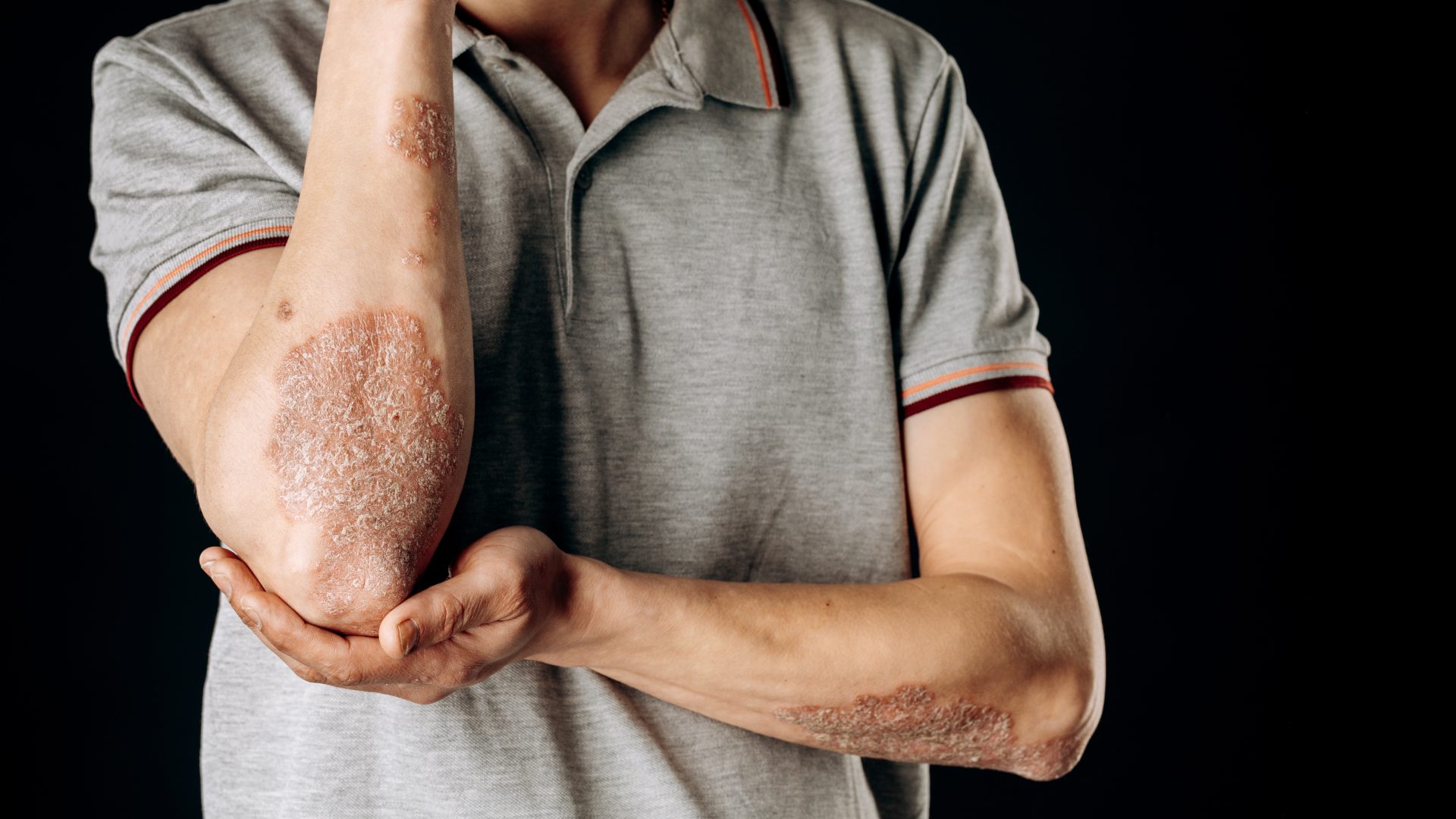You notice a scaly, itchy rash on your skin and immediately start wondering what’s causing it. Two common culprits that can look surprisingly similar are psoriasis and ringworm, but getting the right diagnosis matters because these conditions need completely different approaches to treatment.
While both can create uncomfortable, scaly patches on your skin, one is an autoimmune condition that requires long-term management, while the other is a fungal infection that can be cured with the right medication.
Understanding what’s actually happening to your skin
Psoriasis occurs when your immune system gets confused and starts attacking healthy skin cells. This causes your body to produce new skin cells at an incredibly fast rate — about 10 times faster than normal. All those extra cells pile up on the surface, creating thick, raised patches called plaques.
These plaques typically show up on elbows, knees, back, and scalp, though they can appear anywhere. On lighter skin, they usually look red with silvery-white scales. On darker skin, they might appear purple, brown, or gray.
Ringworm, despite its name, has nothing to do with worms. It’s actually a fungal infection caused by dermatophytes — fungi that love warm, moist environments. The infection creates that characteristic ring-shaped rash with raised edges and a clearer center, which is where the name comes from.
The telltale signs that help you distinguish between them
The shape and appearance of your rash can provide important clues about what you’re dealing with. Psoriasis typically creates thick, well-defined plaques with silvery scales. The patches often have straight edges and can vary in size from small spots to large areas.
Ringworm, on the other hand, almost always forms circular or ring-shaped patches. The edges are raised and scaly, while the center tends to be clearer or less affected. As the infection spreads outward, it often leaves behind healthier-looking skin in the middle.
Location matters too. Psoriasis has favorite spots — it loves elbows, knees, and the scalp. Ringworm is less picky and can show up anywhere, but it’s particularly common on the torso, arms, and legs.
The texture feels different as well. Psoriasis plaques are typically thicker and more rigid, while ringworm patches tend to be flatter with a more flexible, scaly surface.
Why the itch feels different
Both conditions can be itchy, but the sensation often differs in quality and intensity. Psoriasis itch tends to be deeper and more persistent. Some people describe it as a burning sensation rather than just itching. The thick scales can also make the skin feel tight and uncomfortable.
Ringworm itch is usually more surface-level and can be quite intense, especially around the raised edges of the ring. The itch might come and go more than with psoriasis, and it often responds better to cooling treatments or anti-itch creams.
The contagion factor changes everything
Here’s a crucial difference that affects how you manage these conditions: ringworm is highly contagious, while psoriasis is not. If you have ringworm, you can spread it to other people through direct skin contact or by sharing items like towels, clothing, or bedding.
Psoriasis, being an autoimmune condition, can’t be passed from person to person. You might notice family members with psoriasis, but that’s due to genetic factors, not contagion.
This difference impacts everything from treatment urgency to daily life adjustments. With ringworm, you need to be careful about spreading it to others and take steps to disinfect your environment.
Treatment approaches are worlds apart
Getting the right diagnosis matters because these conditions require completely different treatments. Using antifungal medication on psoriasis won’t help, and treating ringworm with immune-suppressing medications could actually make the fungal infection worse.
For psoriasis, treatment focuses on slowing down that overactive immune response and managing inflammation. This might involve topical corticosteroids, vitamin D creams, light therapy, or in severe cases, medications that suppress the immune system.
Ringworm treatment is more straightforward — you need antifungal medication to kill the fungus. Over-the-counter antifungal creams work for mild cases, while more extensive infections might require prescription oral antifungals.
When your body gives you additional clues
Psoriasis sometimes comes with extra symptoms that can help with diagnosis. About 30% of people with psoriasis develop psoriatic arthritis, which causes joint pain and stiffness. You might also notice changes in your nails, like pitting, thickening, or separation from the nail bed.
Ringworm typically stays confined to the skin, though it can cause hair loss if it affects the scalp. You might also notice small, pus-filled bumps around the edges of the ring in some cases.
Getting the right diagnosis matters
While you can make educated guesses based on appearance and symptoms, getting a proper diagnosis from a healthcare provider is important. They can perform simple tests like skin scrapings or fungal cultures to confirm what’s causing your rash.
A potassium hydroxide (KOH) test can quickly identify fungal infections, while a skin biopsy might be needed for unclear cases of psoriasis. These tests prevent months of ineffective treatment with the wrong medications.
Your next steps for clearer skin
If you’re dealing with a persistent, scaly rash, don’t wait to seek help. The sooner you get an accurate diagnosis, the sooner you can start the right treatment and find relief.
Keep track of when your symptoms started, what they look like, and whether they’ve spread or changed. This information helps healthcare providers make accurate diagnoses and develop effective treatment plans.
Remember that both conditions are manageable with proper care. Ringworm can be completely cured with appropriate antifungal treatment, while psoriasis can be effectively controlled with the right management strategy, allowing you to live comfortably with the condition.
















